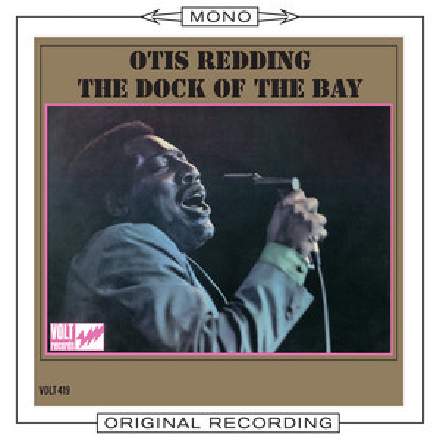
My first ever professional session credit was for violin overdubs on an extremely niche John Betjeman-inspired record put together by Mike Read (the ’80s BBC Radio 1 DJ), and while I was on that session he told a great anecdote about this Otis Redding song. You have to understand that ‘Dock Of The Bay’ was so successful in the UK that pretty much every radio station kept it permanently available for filling gaps in the schedule, even once all of Redding’s other songs had basically disappeared from the public consciousness. And the story Mike Read told was that he once heard another DJ hosting a phone-in request show where he fielded a caller who was clearly a Redding superfan, and who gave a long and emotional spiel about how one of the singer’s less well-known early-career songs had helped him through some difficult personal challenges in his life. All of which, of course, put the DJ in a tight spot, because no station kept more than one Redding song in their library. But rather than admitting this reality on air, the DJ in question, to Read’s everlasting amusement, didn’t miss a beat and chose to style it out with: “You know what? I’ll go one better! Here’s ‘Sitting On The Dock Of The Bay’!”
As a Brit myself, I’ve known this song for as long as I can remember, but had never done any research on it, and I was genuinely surprised to discover that it was recorded only a few days before Redding’s untimely accidental death (posthumously becoming his first US number one single) and that he was only 26 at the time! Honestly, I’d expected him to be at least middle aged, given the well-weathered vocal textures of this performance. This might owe something to the surgery he’d apparently had for laryngial polyps a couple of months prior, but I think his restrained performance volume probably has a lot to do with it too – it means that the quieter ‘mechanical noises’ end up louder in the mix relative to the main body of each sung note. It’s not a bad general rule of thumb, in fact, that if you want more tonal character on your recording, then ask the musician to play quieter and just turn up their track in the mix.
The drums offer another paragon of understatement. For a start, there are no cymbals or toms at all – just kick, snare and closed hi-hat. But, in addition, the same one-bar drum pattern repeats almost all the way through, with only four fills in the entire song: identical syncopated-kick fills at the end of each chorus and an eighth-note snare build-up at the end of the middle section. Further restraint can be seen in the use of the seashore Foley, which appears only at the top and tail of the song, and as a kind of ‘production hook’ faded in briefly to accompany each chorus’s statement of “watching the tide roll away”.
The backing-track sonics are well designed for mix clarity, with the kick’s sparing low end leaving plenty of room for the bass, and the midrangey piano tucking in nicely between the bass’s warmth region and the acoustic guitar’s upper-spectrum string details. This is something that was so important in an era where mono was still the predominant delivery format and stereo positioning couldn’t be used as a shortcut to mix separation.
The most interesting thing about this song for me, though, is that it’s built entirely from major chords. Admittedly, if those chords had just been I, IV, and V then there’d be nothing remarkable about that, but here Redding uses I, II, III, IV, V, VI, and bVII – more than half of which involve chromatic alterations from the home scale (whether you consider that home scale to be G major or the G Mixolydian mode, which is another moot point). And yet the vocal doesn’t follow any of those chromaticisms, sticking doggedly to G Mixolydian throughout, resulting in some nice false-relations, like the vocal G of “sitting on the dock of a” against the G# of the E major chord under “bay” – and, indeed, the F# added ninth being played by the lead guitar. (For a couple more gorgeous examples of an artist leveraging this unusual harmonic technique, check out Mitski’s much more recent songs ‘Last Words Of A Shooting Star’ and ‘A Pearl’.)
For me, this use of harmony actually feels like it has something fundamental in common with the parallel chord-movements of late 19th-Century classical composers such as Debussy and Ravel. You see, one contemporary criticism of the technique was that it cut chords adrift from their traditional function as a means of establishing and progressing between different musical keys, therefore making the music undesirably vague and directionless. Clearly, though, those composers demonstrated how that very ambiguity and fluidity could be a positive thing for certain types of musical expression. And this is where I draw a connection with this Otis Redding song, because I think that he’s also taking advantage of the harmonic ambiguity of all those non-diatonic major chords to cleverly underline the song’s central message of indecision and prevarication. Furthermore, I don’t think it’s too fanciful to suggest that the rise and fall of the verse’s repeating I-III-IV-II chord progression also supports the song’s imagery of the ebbing and flowing of waves/tides, especially as both the lead-vocal melody and the chromatically sidling bass line follow the same trajectory.
Yet, despite all this depth and complexity, Redding apparently considered the song unfinished, and wanted to rerecord it. Rarely have tragedy and irony been so intertwined.










